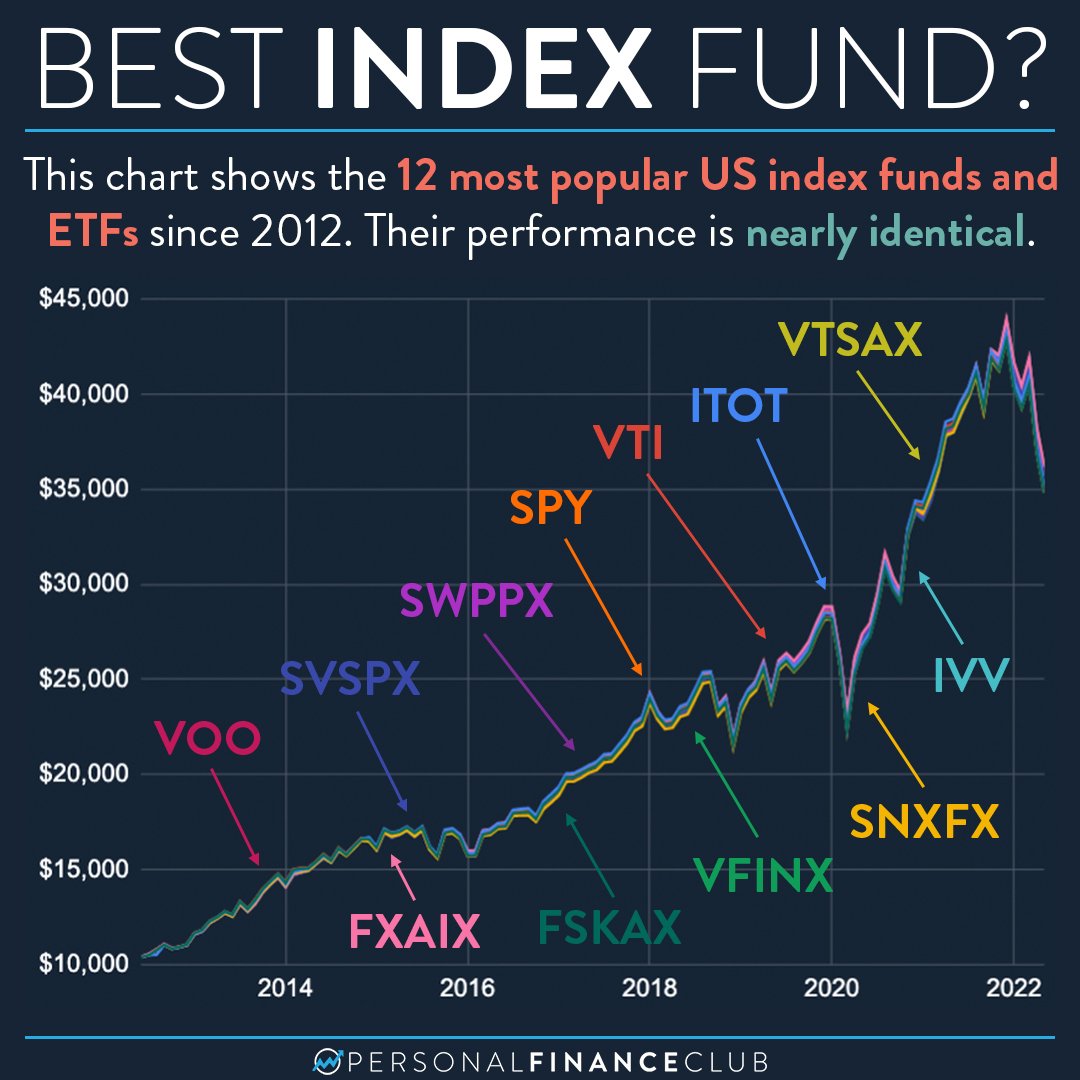SCFO #009: A Simple Way To Build Wealth As A Solopreneur
Read time: 2:45 minutes
36% of Americans say they won’t have enough to retire.
To avoid becoming one of those statistics, it’s important to capture the wealth you create as a solopreneur.
And starting sooner is always better than starting later because, well, compounding.
But don’t just take my word for it; take it from Einstein. He’s a pretty smart dude.
“Compound interest is the eighth wonder of the world.”
— Albert Einstein
But the question for many is how do you accumulate wealth?
Let’s dive in today to one of the simplest ways to accumulate wealth.
Saving With Low-Cost Index Funds
Index funds provide a frictionless path to accumulate wealth.
Why?
The barrier to entry is incredibly low.
You can start an account at Vanguard with as little as $1, and managing your investments takes very little time.
Index funds are also:
Low Cost
Diversified, and
Outperform actively managed funds
The strategy is to set it and forget it because tinkering with your investments can cost you…
In the investment space, it’s known as the investor behavior gap, and it can cost retail investors 5.7% per year, according to studies conducted by DALBAR. (note: this # varies year to year).
To put that number into context, on just a $100k investment, you’d lose out on over $115k of earnings in a decade.
Magnify the mistakes of retail investors over three decades, and you’re looking at close to a $1.6m loss.
Ouch.
Active fund managers fair better, but not by much.
According to the S&P Dow Jones Indices SPIVA report, ~80% of actively managed funds underperformed the S&P 500 index over the past ten years.
Those numbers get worst as you zoom out because beating the market over long stretches is nearly impossible.
Start with index funds, and accumulate wealth passively over the long haul.
Generally, I keep it simple with VOO and VTI (not financial advice) but keep in mind that the spread on the most popular index funds is relatively small.
Here is a chart from Jeremy Schneider at Personal Finance Club that illustrates just that:
As such, don’t let analysis paralysis get in the way of starting.
Tax Opportunities For Solopreneurs
If you’re accumulating wealth with passive investing, the question is, how can I save on taxes?
First, we need to figure out how we optimize your taxes over your lifetime.
This starts with understanding (1) where you’re at and (2) where you’re going,
To simplify the approach (at a high level):
Peak Earnings Years = Defer taxes until a later date
Low Earnings Years = Accelerate taxes to today
If you can map out your earnings trend through retirement, it can help guide decisions to make to optimize your tax plan.
Retirement provides another opportunity to accelerate taxes since taxable earnings are typically lower.
The Three Buckets
Great, so what do I do?
You have three buckets to play with for saving:
Pre-Tax → Solo 401(k) / Traditional IRA
After-Tax → Roth IRA / Roth 401(k)
Taxable Earnings → Brokerage Account
The use of these buckets depends on where you’re in your earnings journey.
As a general rule, if you’re at peak earnings, leverage pre-tax savings.
You’ll be cutting out taxes at peak tax brackets today to play (or pay) another day.
The opposite holds true if your earnings are low.
Counterintuitively, you want to accelerate taxes using after-tax savings to take advantage of lower tax brackets.
QUICK EXAMPLE: you’re in the 12% tax bracket today, but expect your income to grow putting you in the 28% bracket in 2028.
Would you rather pay taxes today leveraging a Roth 401(k) OR in 2028?
I don’t know about you, but I’d lean towards saving 16% and taking the tax hit today.
We didn’t give much discussion to the taxable earnings bucket.
This bucket is about flexibility and is sometimes elegantly called “F-You Money.” It can help you:
Retire earlier
Take a career break
Or make a career pivot
It’s a get-out-of-jail-free card if you or your spouse are in a situation you want out of fast.
Fill this up accordingly to give yourself more flexibility.
Super-Charging your Savings
A quick rundown on where to save.
As your earnings potential progresses, a 401(k) OR Solo 401(k) (depending on if you have employees) will help you supercharge savings.
Why?
Traditional IRAs and Roth IRAs are limited to a $6,500/year investment per person ($7,500 if > age 50).
If you’re looking to save more, a Solo 401(k) provides a HUGE opportunity for tax deferral.
2023 Limits are:
Employee Contributions → $22,500 ($30,000 if over 50)
Employer Contributions → up to 25% of compensation
Max Combined → $66,000 (extra $7,500 if over 50)
PLUS, you can include your spouse on a Solo(k).
This gives you a potential write-off → $132,000!
Translation: up to $50k+ of tax savings if you max this out and find yourself in the highest tax brackets.
TL;DR
Don’t wait to save. Start today.
Consider low-cost index funds to simplify savings.
Leverage the three buckets for saving: pre-tax, after-tax, and taxable investments.
Use the appropriate bucket based on the season of earnings: pre-tax savings during peak earnings and after-tax savings during low earnings years (as a general rule).
Supercharge your savings with a Solo 401(k) or 401(k) if you have employees.
Thank you for reading today!
Disclosure: information today does not constitute investment advice. As always, consult with your personal financial advisor.
P.S. if you’re a solopreneur and struggling managing your business and personal finances, book a free 15-minute call today.
Let me help you get unstuck, so you can focus on doing the things you love.

